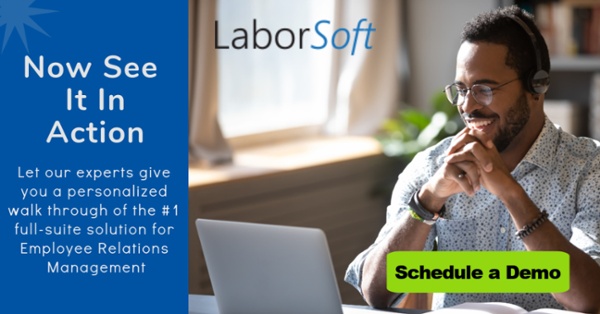Labor Relations | Employee Relations
What’s the Difference Between Employee and Labor Relations?
Read Time 4 mins | Dec 19, 2023 | Written by: Frankie Kourtis

Employee and labor relations are closely related issues with some very important differences. Successful businesses understand the importance of both. While the two terms sometimes get used interchangeably, they refer to two different types of relations between employers and employees. “Employee relations” typically refers to interactions between employers and individual employees. “Labor relations” can refer to relationships between employers and the unions that represent their employees. Even if a company’s employees are not part of a union, the company can have a labor relations department to address concerns that affect large groups of workers. Human resources departments and administrators have important roles to play in both employee and labor relations. Read on to learn more about the two and how software can help with both employee and labor relations.
Employee Relations vs Labor Relations
When comparing the concepts of labor relations vs employee relations, the similarities may seem more apparent than the differences. Both types of relations can involve workplace issues like wages, benefits, or overtime. The difference is largely in the scope of how employers address those issues:
- Employee relations involve individual employees’ concerns, such as a new hire’s starting salary, a veteran employee’s eligibility for a raise, or an employee’s harassment complaint against a supervisor.
- Labor relations involve large groups of employees, such as company-wide policies regarding raises or harassment investigations. Other issues that affect most or all employees, such as workplace safety policies and practices, may also fall under the labor relations category.
Employee Relations
Employee relations place the focus on individual employees’ concerns and needs. A business whose employees feel valued, respected, and heard is likely to find itself with a loyal and productive workforce. Fostering communication with employees is an important step in this process. Employee relations may involve issues like:
- Wages, salaries, commissions, and bonuses;
- Raises and promotions;
- Benefits;
- Eligibility for family medical leave, sick leave, or vacation time;
- Conflicts between employees;
- Complaints regarding workplace harassment or other alleged unlawful acts by individual supervisors or co-workers; and
- Complaints about alleged wrongful practices by the employer, also known as whistleblowing.
Each of these issues involves individual employees’ concerns. As such, they require a personalized response that addresses an employee’s unique circumstances.
Labor Relations
Labor relations looks at issues that concern large groups of represented employees. When employees are represented by a union, labor relations manages matters that are outlined in the collective bargaining agreement (CBA). The union speaks for the employees in all matters in this situation. Individual employees do not have their own voices and must rely on the union to advocate for them.
Building trust between individual employees and their employers is a key part of employee relations. Labor relations have the same goal, at least in theory. In reality, routing all communication through a union can increase strain between employees and employers. This can make conflict, including strikes, more likely.
The absence of union representation does not mean that an employer does not have to worry about labor relations. That employer must address the same issues, and they have an opportunity to do so in a way that prevents their employees from feeling the need to join or form a union.
Overlap Between Employee and Labor Relations
The two types of relations can overlap where certain employee rights are concerned. Labor laws like the National Labor Relations Act protect employees’ rights to engage in organizing for collective bargaining purposes. Employers may not interfere with or discriminate against employees who engage in protected activities. Employees who believe their employers have violated these laws raise a labor relations issue that may require an employee relations response,
Human Resources Role in Managing Employee and Labor Relations
HR professionals have important roles to play in both employee and labor relations. They can facilitate communications with individual employees, unions, and others to ensure that the employer hears and responds to employee concerns. The two areas may require different types of knowledge and skill sets, so HR departments need to educate and train managers in both. Technology is available that can save time for HR managers, reduce errors, and streamline communication between employers and employees.
Learn How Employee and Labor Relations Software Can Help Your Business
The relationship between an employer and its employees is more intricate and complex than many people can imagine. It requires constant attention and care to keep the employer’s business running with the greatest efficiency and success. Employee and labor relations software can help employers manage all of the facets of these relationships, allowing every employee to feel heard and valued while maintaining the highest standards for the workforce. LaborSoft can help your business meet its HR management needs. Contact us today to set up a customized demonstration to learn more. You can also download our white paper, These 7 Key Employee Relations Management Tools Will Streamline Your Process.


